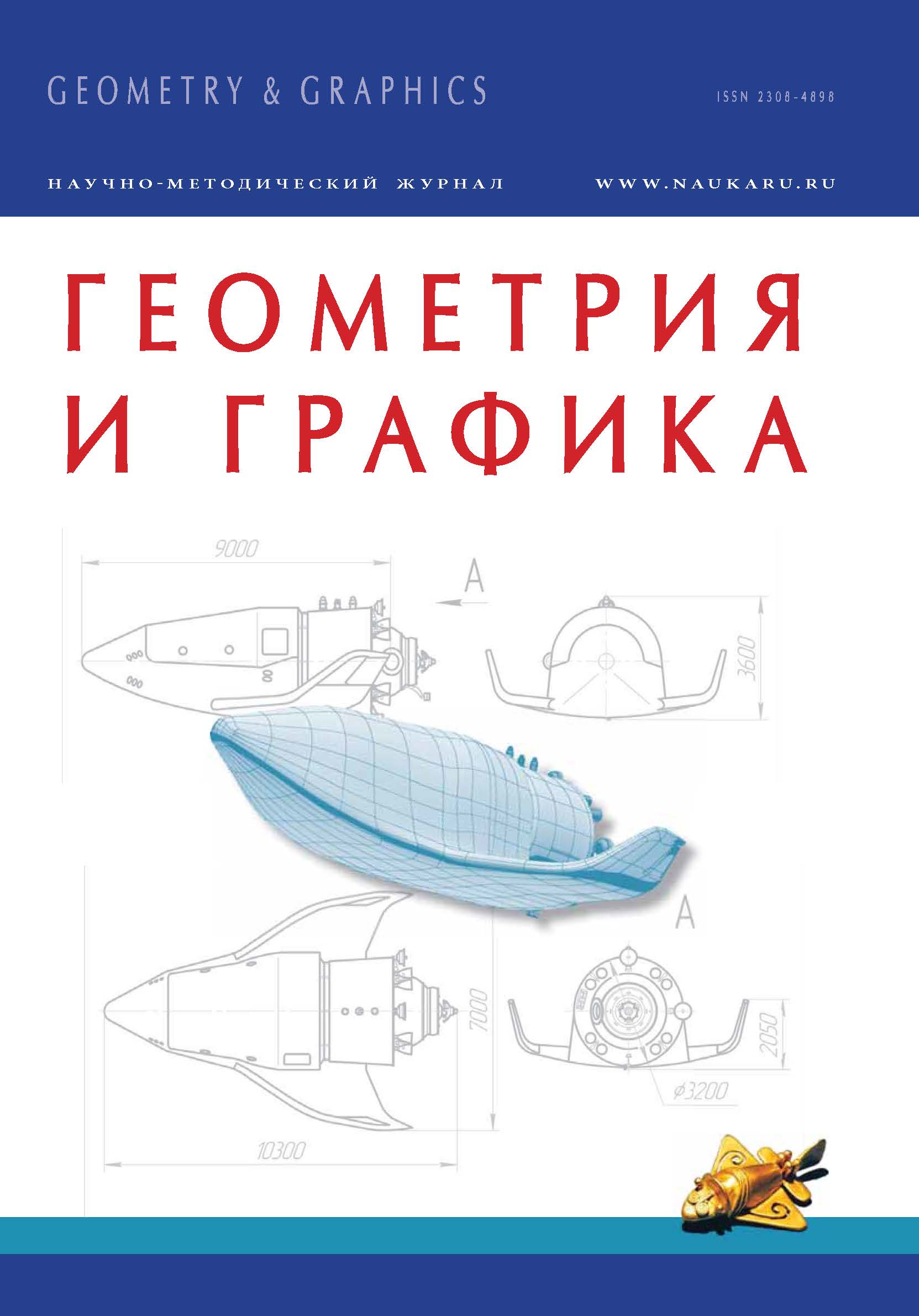Kassel', Germany
Descriptive geometry, as the elementary one, studies the real world by its abstractions. But Euclid’s geometry of the real world is conjugated to pseudo-Euclidean geometry, and they make a conjugated pair. As a consequence, each real figure is conjugated with some imaginary pattern. This paper apart from some science facts demonstrates the presence of imaginary patterns in geometric constructions, where the imaginary patterns manifest themselves as singularities or as geometrically imaginary points (GIP) in “Real — Imaginary” conjugate pairs. The study is conducted, as a rule, from simple to complex, from particulars to generals. Rotation of a circle around an arbitrary axis generates, in the general case, a quartic surface. Among the quartic surfaces are a circular torus and a sphere as a special case of the torus. The torus is obtained from the circle rotation around an axis lying in the circle plane. If the axis does not intersect the generating circle, then the surface is called an open torus; when the axis intersects the generating circle, then the surface is called a closed torus; when the rotation axis passes through the center of the generating circle, then the surface is a sphere. The open torus is associated with a bagel, and the closed one — with an apple. The torus is a perfect example for the application of two well-known Guldin’s formulas. Next, the imaginary torus support is considered in this paper, at the end of which the sphere and its imaginary sup - port are considered. Imaginary patterns lead to the complex numbers, in regards to which grieved the great J. Steiner, calling them "hieroglyphs of analysis". But imaginary patterns exist apart from analysis formulas — they are the part of geometry. J.V. Poncelet was the first who understood the imaginary points in 1812, being in Russian captivity in Saratov and, what is important, without analysis formulas at all. Computational geometry often shows quantities, large numbers of real figures, because it takes into account the imaginary images too.
rotation, axis, circle, sphere, torus, imaginary support, singularity, double points.
Введение
Исследование ведется, как правило, от простого к сложному, от частного к общему. Вращение окружности вокруг произвольной оси образует в общем случае поверхность четвертого порядка. Среди поверхностей четвертого порядка стоит круговой тор и как частный случай тора — сфера [1; 4; 5; 7–10; 12].
1. Bronshteyn I.N., Semendyayev K.A. Spravochnik po matematike dlya inzhenerov i uchashchikhsya vtuzov [Handbook of mathematics for engineers and technical colleges students]. Moscow, Nauka Publ., 1986. 544 p. (in Russian).
2. Byushgens S.S. Differencial'naya geometriya [Differential geometry]. Moscow, LCI Publisher Publ., 2008. 304 p. (in Russian).
3. Vygodskiy M.YA. Spravochnik po vysshey matematike [Handbook of higher mathematics]. Moscow, Nauka Publ., 1975. 872 p. (in Russian).
4. Ivanov G.S., Dmitrieva I.M. O zadachakh nachertatel'noy geometrii s mnimymi resheniyami [About the tasks of descriptive geometry with imaginary solutions]. Geometriya i grafika [Geometry and Graphics]. 2015. V. 3, i. 2, pp. 3-8 (in Russian). DOI:https://doi.org/10.12737/12163.
5. Girsh A.G. Kompleksnaya geometriya - yevklidova i psevdoyevklidova [Complex geometry - Euclidean and pseudo- Euclidean] Moscow, Publisher Maska Publ., 2013. 216 p. (in Russian).
6. Girsh A.G. Mnimosti v geometrii [The imaginary in geometry]. Geometriya i grafika [Geometry and Graphics]. 2014. V. 2, i. 2, pp. 3-8 (in Russian). DOI: 10. 12737/5583.
7. Girsh A.G. Naglyadnaya mnimaya geometriya [Transparent imaginary geometry]. Moscow, Publisher Maska Publ., 2008. 213 p. (in Russian).
8. Klein F. Vysshaya geometriya [Higher geometry]. Moscow, Editorial URSS Publ., 2004. 400 p. (in Russian).
9. Klein F. Ehlementarnaya matematika s tochki zreniya vysshej. T. 2. Geometriya. [Elementary mathematics from the point of view of the highest. V. 2. Geometry]. Moscow, Nauka Publ., 1987. 416 p. (in Russian).
10. Peklich V.A. Mnimaya nachertatel'naya geometriya [Imaginary descriptive geometry]. Moscow, Publisher DIA Publ., 2007. 104 p. (in Russian).
11. Available at: http://www.anhirsch.de/
12. Shal' M. Istoricheskij obzor proiskhozhdeniya i razvitiya geometricheskih metodov [Historical overview of the origins and development of geometric methods]. Moscow, Mosk. mat. of about Publ., 1883. 311 p. (in Russian).






